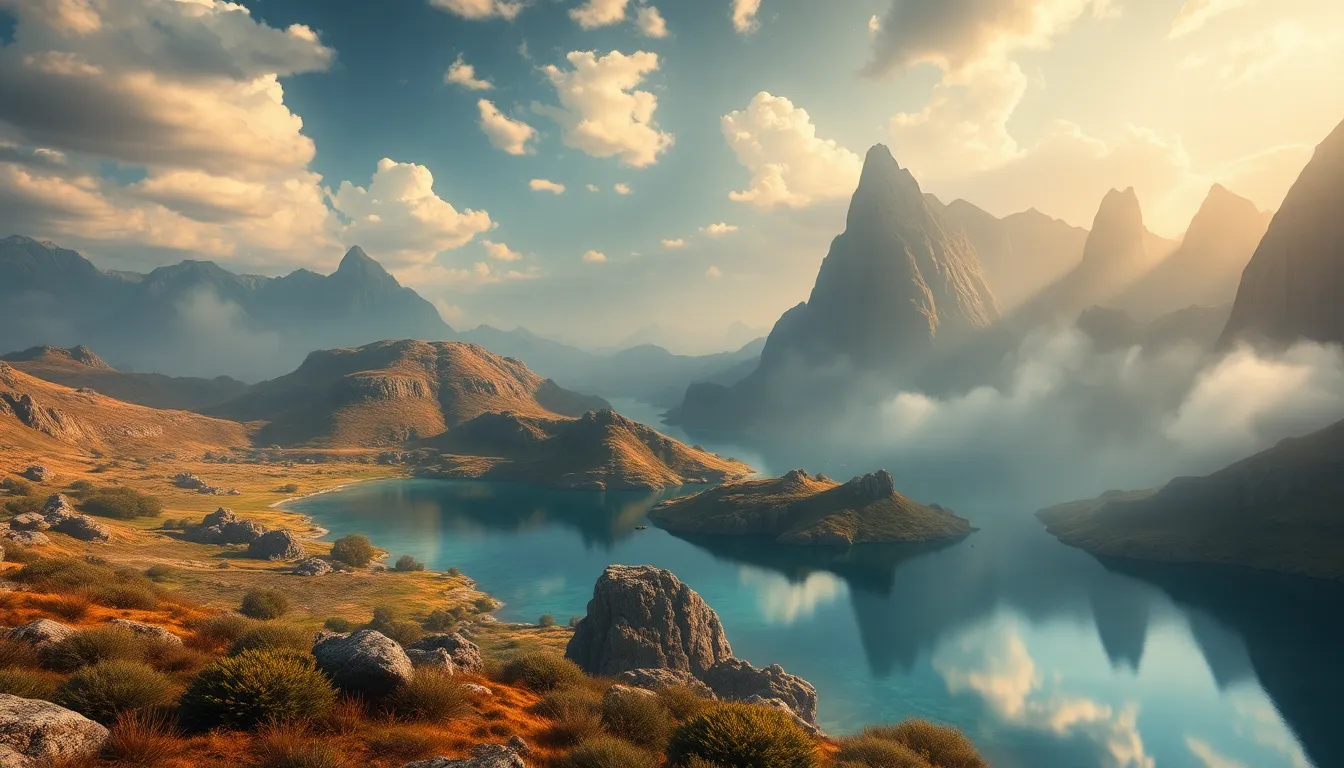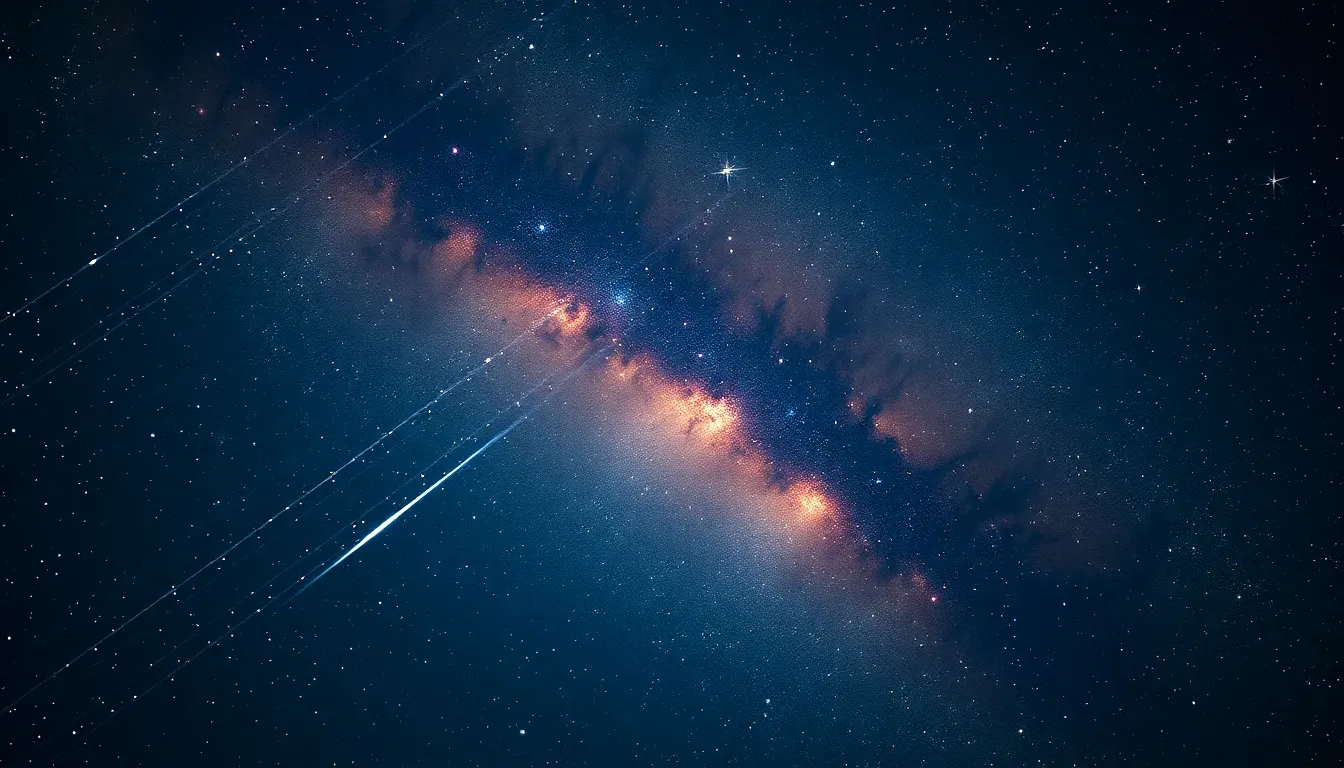The Divine Waters: Sacred Lakes in Mythical Tales
I. Introduction
The world is rich with sacred lakes, each steeped in mythology and cultural significance. From the shimmering surfaces of ancient waters to the depths of spiritual beliefs, these lakes serve as more than just bodies of water; they are vital components of the mythologies that shape various cultures. Across the globe, water has long been revered as a source of life, transformation, and divine connection. This article delves into the profound relationship between lakes and myths, exploring how these sacred bodies of water resonate within the human experience.
II. The Role of Water in Mythology
Water, in its many forms, plays a crucial role in the mythologies of diverse cultures. Its symbolism often encompasses various elements:
- Symbolism of water: Water represents purity, renewal, and rebirth. It is often viewed as a cleansing force, washing away sins and impurities.
- Source of life: Water is essential for survival. In myths, it is frequently depicted as the origin of life itself, embodying fertility and growth.
- Portals to the divine: Lakes are often seen as sacred gateways, bridging the terrestrial world with the spiritual realm.
III. Sacred Lakes in Ancient Civilizations
Throughout history, numerous civilizations have revered specific lakes for their spiritual significance. Three notable examples include:
- Lake Titicaca: Located on the border of Peru and Bolivia, Lake Titicaca is considered the birthplace of the Inca civilization. According to legend, the first Inca, Manco Cápac, emerged from its waters, marking it as a sacred site for the Andean people.
- Lake Baikal: Known as the world’s deepest freshwater lake, Baikal holds a prominent place in Siberian folklore. It is believed to be home to spirits and mythical creatures, providing sustenance and wisdom to those who honor it.
- Lake Geneva: This picturesque lake in Switzerland is steeped in Celtic legends. It is thought to be the dwelling place of water spirits who protect the land and its people.
IV. The Creation Myths Involving Lakes
Many creation myths across cultures highlight the role of water, particularly lakes, as sites of divine emergence:
- Creation through water: Various mythologies speak of the world being formed from primordial waters, with lakes serving as the foundation of life.
- Divine birth: Many cultures feature lakes as the locations where gods or significant figures are born, signifying their importance in the cosmic order.
- Comparative analysis: A closer look at these myths reveals common themes, such as the transformative power of water and its connection to existence itself.
V. Lakes as Places of Pilgrimage and Ritual
Across the globe, sacred lakes have been the focus of cultural practices and rituals:
- Cultural practices: Many communities engage in rituals at sacred lakes, including offerings, prayers, and ceremonies intended to honor the spirits of the water.
- Pilgrimage sites: Lakes like Ganges in India and Lake Titicaca in South America serve as pilgrimage destinations, drawing thousands who seek spiritual connection and renewal.
- Modern rituals: Contemporary ceremonies continue to thrive, blending ancient traditions with modern practices, reflecting the ongoing significance of these sacred waters.
VI. Legends of Healing and Transformation
Sacred lakes are often associated with miraculous healing and transformative powers:
- Miraculous healings: Many tales recount instances where individuals have experienced profound healing after bathing or meditating near these lakes.
- Transformation myths: Stories involving water deities often highlight themes of transformation, where individuals undergo significant changes through their interaction with water.
- Psychological significance: These legends not only serve to inspire but also offer psychological and spiritual lessons about personal growth and renewal.
VII. The Guardian Spirits of Sacred Lakes
Water deities and guardian spirits are integral to the mythology surrounding sacred lakes:
- Water deities: Across cultures, various water deities are revered, each embodying different aspects of water’s power and significance.
- Guardian spirits: These spirits are believed to protect the lakes and their surroundings, ensuring that the waters remain pure and sacred.
- Encounters with lake spirits: Many tales recount encounters with these beings, imparting wisdom, guidance, and moral lessons to those brave enough to seek them.
VIII. Environmental and Cultural Preservation
Modernity poses challenges to the preservation of sacred lakes and their cultural significance:
- Impact of modernity: Industrialization, pollution, and climate change threaten the delicate ecosystems of sacred lakes, leading to a decline in their spiritual and cultural relevance.
- Preservation efforts: Various organizations and communities work tirelessly to protect these sacred sites, promoting sustainable practices and cultural education.
- Ecology and conservation: The intersection of mythology and ecology highlights the importance of preserving sacred lakes not only for their spiritual heritage but also for their ecological health.
IX. Contemporary Interpretations and Adaptations
The influence of sacred lakes extends into modern literature and art:
- Modern literature: Many contemporary authors draw inspiration from ancient myths surrounding sacred lakes, reinterpreting them for today’s audience.
- Cultural reinterpretation: Today’s societies often reframe these age-old tales, finding new meanings and relevance in them.
- Technology’s role: Digital platforms facilitate the sharing of these stories, ensuring that the myths of sacred lakes continue to resonate with new generations.
X. Conclusion
The enduring nature of sacred lakes in mythology reflects a timeless human connection to water and spirituality. These sacred bodies of water serve as reminders of our origins, our transformations, and our relationships with the divine. As we continue to explore and honor these lakes, we reaffirm our commitment to understanding their significance, nurturing our spiritual connections, and preserving these vital ecosystems for future generations.



